Green Gardening: Students show why every day should be Earth Day
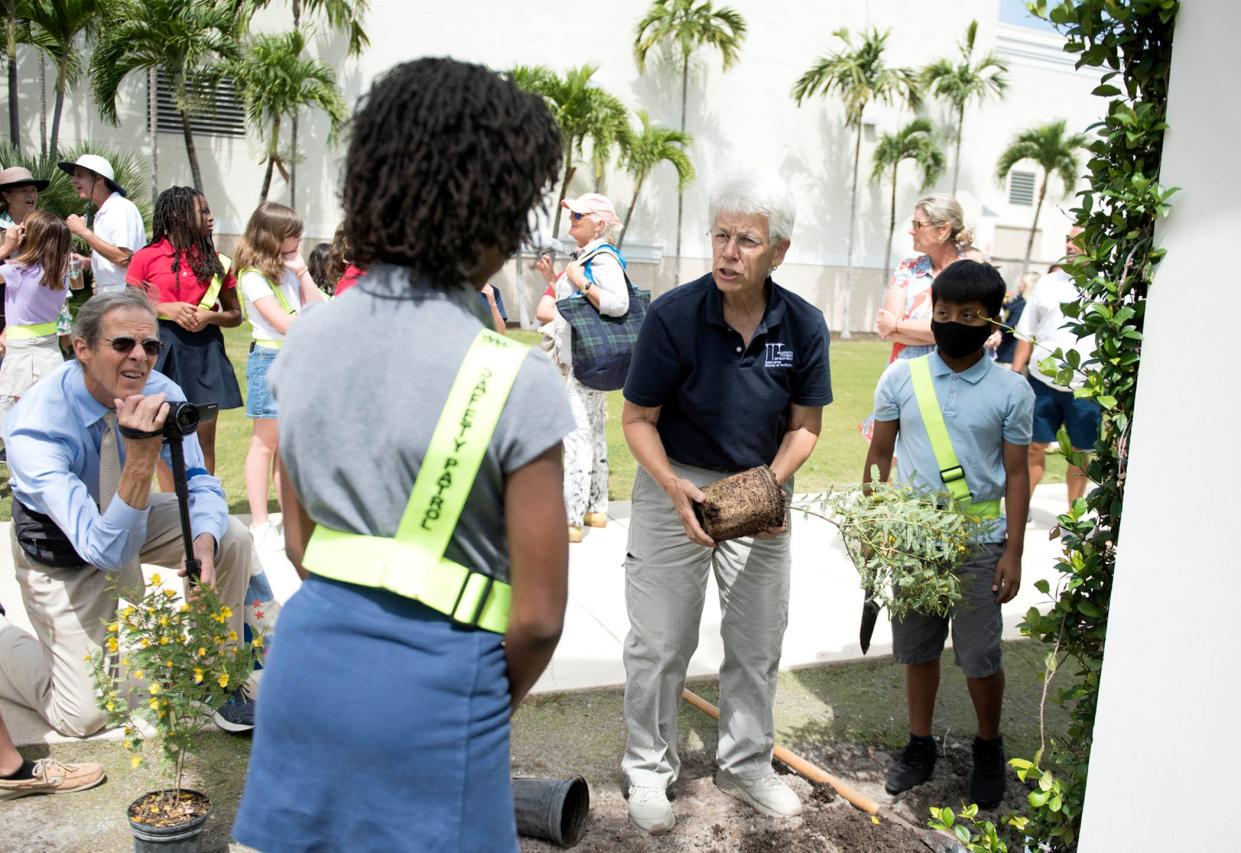
The town of Palm Beach along with the Preservation Foundation, Palm Beach Day Academy and Palm Beach Public school students, the Palm Beach Civic Association, the Mounts Botanical Garden, and the Garden Club did an amazing job recently celebrating Earth Day.
At the Mandel Recreation Center, eighth-grade Day Academy students explained the work they have done since 2020 planting mangroves and oyster reef balls on Tarpon Cove, a restoration island site in the Intracoastal. The students explained how mangroves, native to Florida, provide habitat for over 70 percent of marine animals, while filtering the water and protecting our shores from erosion.
On their field trips to the island, the students also deployed oyster reef balls, artificial reef models that mimic the structure and function of natural reefs, creating habitat for oysters and other marine species to survive. In case you weren’t aware of the value of oysters, these natural water purifiers remove nitrogen and sediment from our lagoon. When you consider that excess nitrogen is a large contributor to red and blue-green algae blooms, the work these kids are doing is invaluable.
While working with marine environments, the students realized their interconnectedness with the health of our land, and so they have partnered with Community Greening, an outreach program dedicated to planting trees. Its mission statement is something we could all embrace: to create sustainable green spaces and a vibrant tree canopy to strengthen our environment, our economy, our society, and our health. Since its inception in 2016, Community Greening has planted more than 9,000 trees. These kids are definitely on the right track so let’s all follow their lead. They want Earth Day to be every day.
Recently: Green gardening: In our own backyards, we can help heal the planet
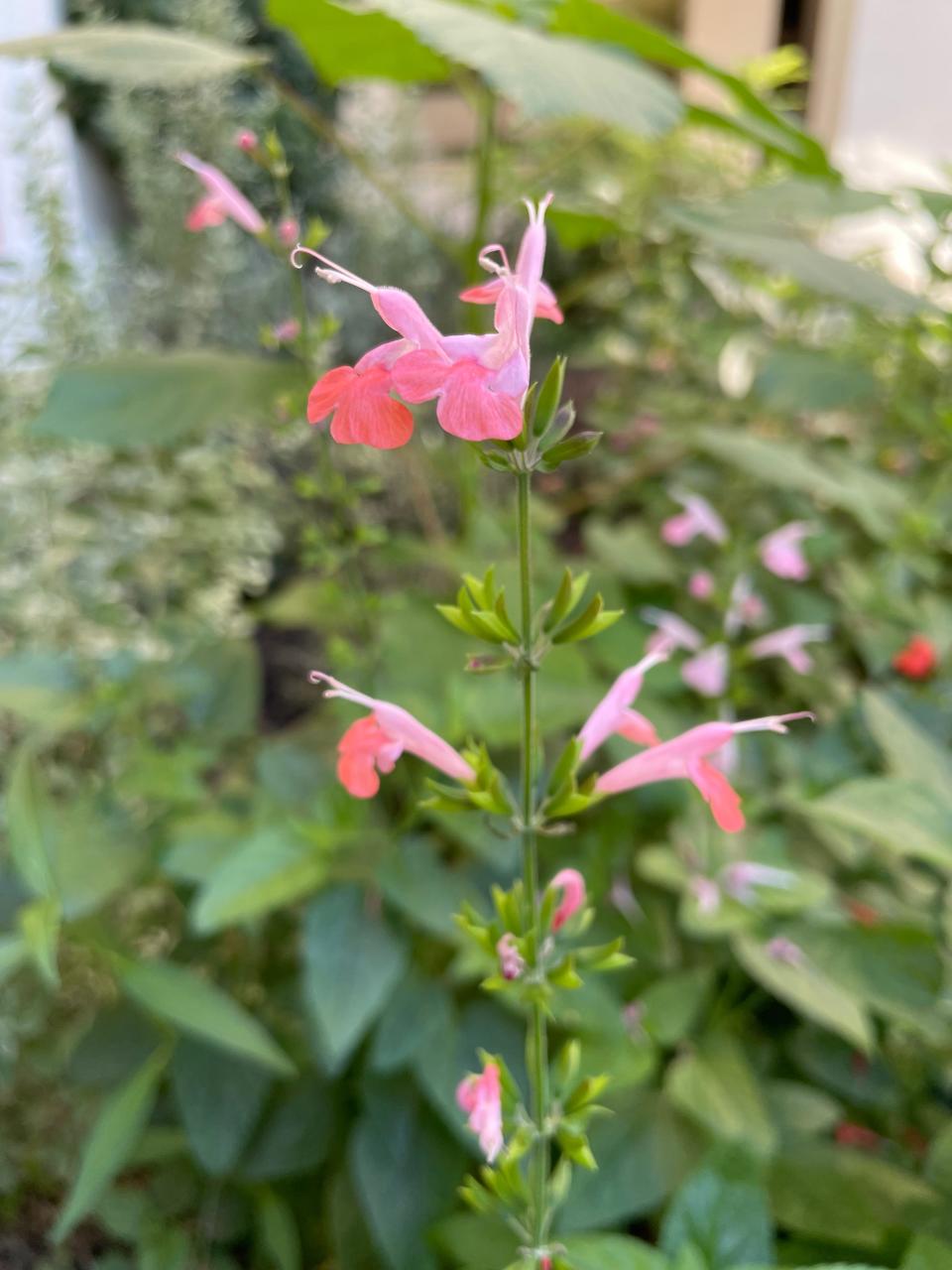
Students at Palm Beach Public spent the last few months learning about the importance of native species and have planted salvia coccinea (red, pink and white sage), fog fruit, mimosa and our state wildflower, coreopsis, in window boxes outside their classrooms.
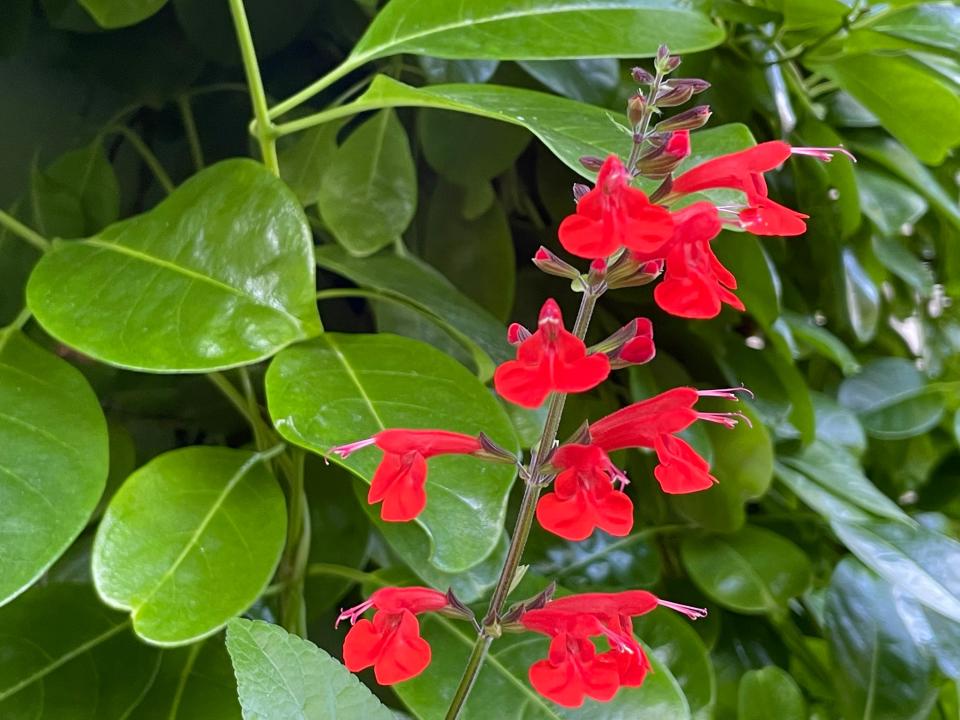
The plants are now in full bloom, brightening the courtyard and attracting butterflies and pollinators. In their wonderful video, each student spoke about an important benefit of native species: from promoting biodiversity, creating habitat and thriving without chemicals, to providing food for the insects that are essential to life on our planet. Then they added some impressive statistics for the United States: $25 billion dollars are spent on lawn care each year; 580 million gallons of gasoline are used by lawnmowers, each of which produces 11 times as much pollution as a new car; and 30 percent to 60 percent of our water supply goes to watering lawns. Lawn care produces 13 billion pounds of toxic pollutants per year.
More: Green Gardening: The right plants will ensure the presence of pollinators in your garden
Additionally, 85 percent of all plant species rely on pollinators and 500 million tons of insects are eaten by birds each year. Non-native species cannot support the insect populations needed by birds, so the students urged us to show a little more respect for the natives that have evolved here over thousands of years.
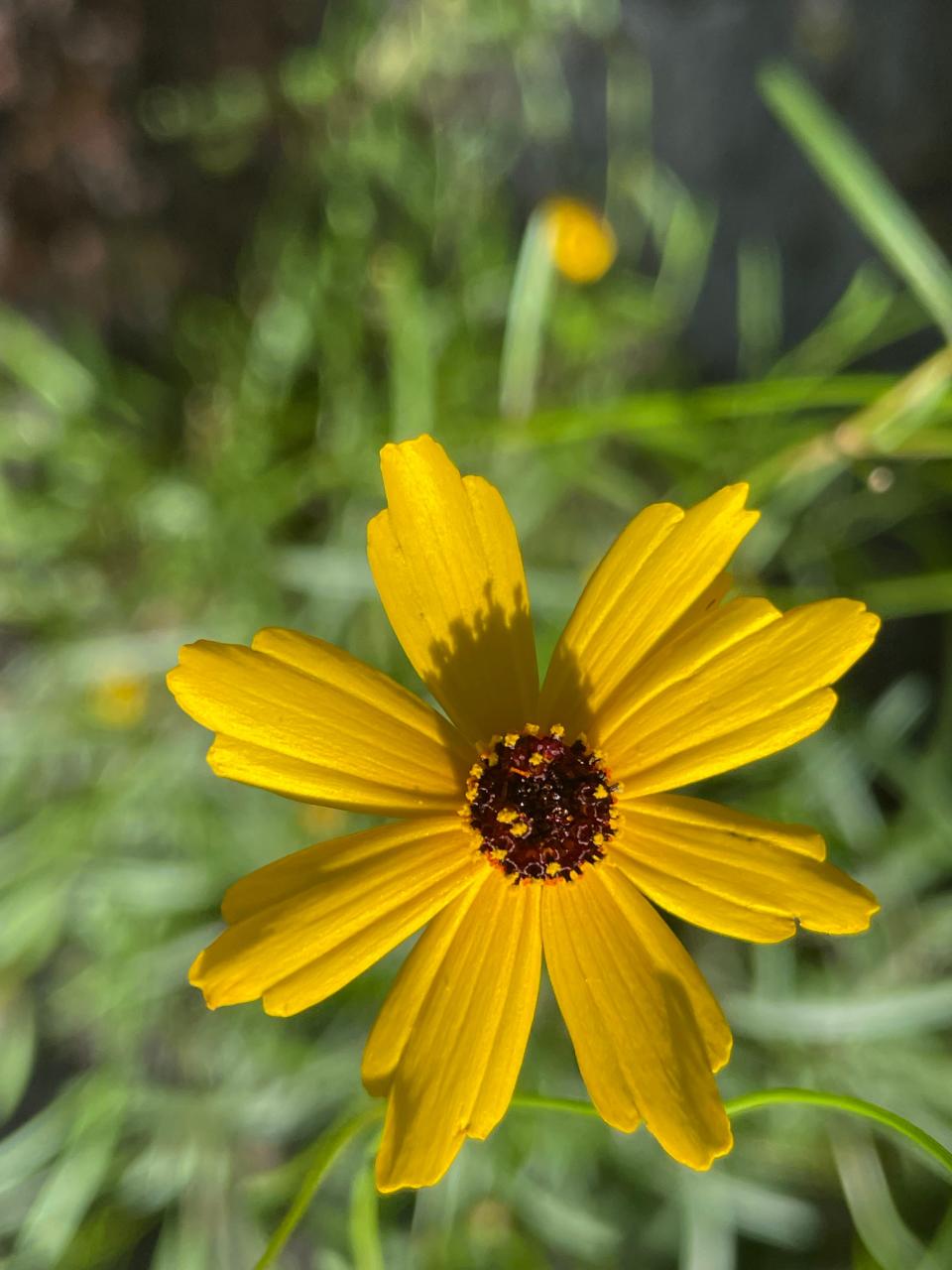
These children have done their homework and remind us not only to minimize our lawn areas but to stop using toxic chemicals that kill essential insects and bacteria. They realize that plants must be more than just decoration; they must also contribute to creating sustainable biodiverse ecosystems. The students implored us to restore our earth. Perhaps we should listen to them a little more carefully.
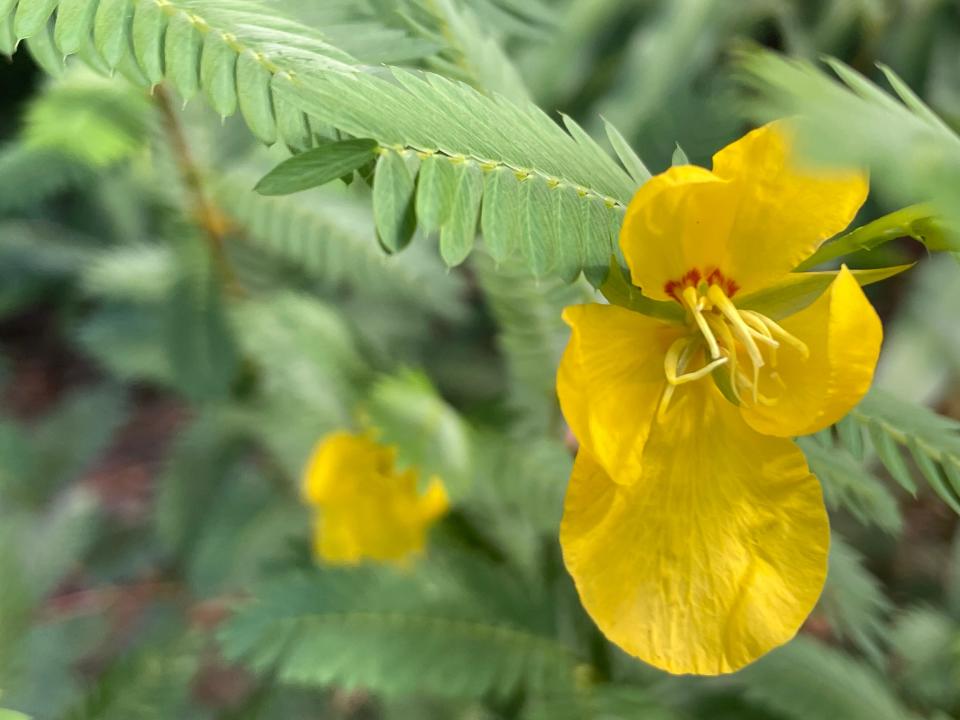
After the students’ presentations, everyone was given a partridge pea plant, Chamaecrista fasciculata, the larval host to ceraunus blue, cloudless sulphur, little yellow and gray hairstreak butterflies.
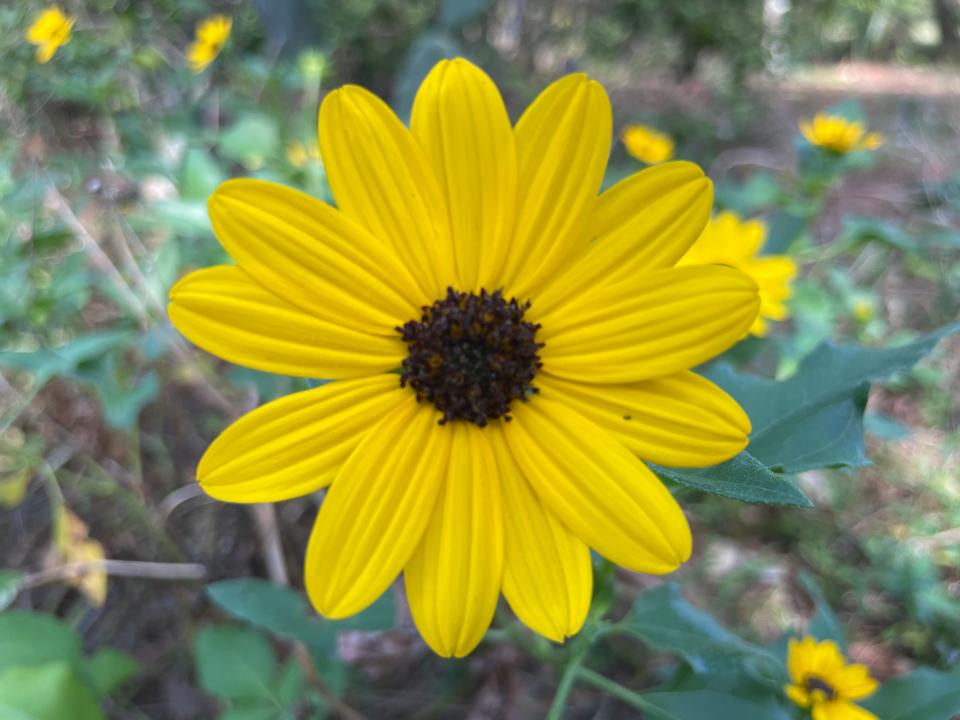
The Preservation Foundation’s horticulturalist, Susan Lerner, helped the children plant these around the flagpole at the recreation center. She also has put in a wonderful native garden adjacent to the entrance featuring plants generally found in maritime hammocks and coastal strands: a beautiful gumbo limbo serves as a focal point surrounded by dune sunflower, beach verbena, sunshine mimosa, Joewood, Bahama senna and our endangered Jacquemontia reclinata. All provide food for birds and nectar for butterflies.
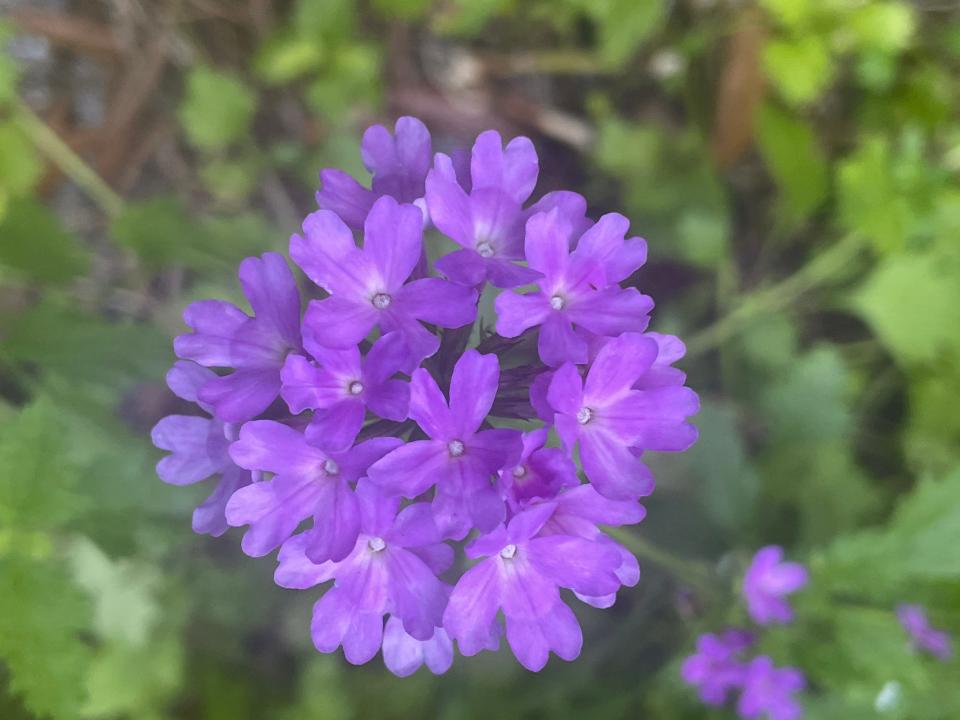
Celebration at Pan's Garden
On May 1, Pan’s Garden at the Preservation Foundation was host to an engaging series of Earth Day workshops for children.
Stations were set up around the garden to demonstrate beekeeping, with honey tasting for the lucky participants, and seed balls, where children rolled moist dirt into balls and added seeds of native tropical sage, dune sunflower, coreopsis, partridge pea and the beautiful blue Salvia lyrata. Each ball was placed in a paper cup for the children to plant at home, and I can attest to my grandchildren’s excitement in digging holes in my garden, dropping in the balls and then marking the spots to watch for germinating seeds. Another station showed how to transport flower arrangements without using any plastic, by wrapping the blooms in foliage. There also were Earth Day-inspired games, art stations, storytelling and lots of finger food. It was a huge hit for all ages.
The overwhelming message from our children is that Earth Day should be every day. Making just a few changes in your routine could make all the difference.
Call your landscaping company and make sure they aren’t applying unnecessary chemicals; better yet, ask them not to apply anything unless there is a dire emergency. A friend of mine told me her landscapers planned to apply Roundup to her rather extensive lawn, in order to replace the grass. Aware of the toxicity of glyphosate, she canceled the treatment and the lawn will be dug up instead, a process used for centuries prior to the advent of poisons sold to us under the guise of necessary environmental tools. Listening to our kids bandy about terms such as “biodiverse ecosystems,” “native sustainability” and “our fragile barrier island” gives me so much hope for the future. If we put these students in charge, our planet can survive.
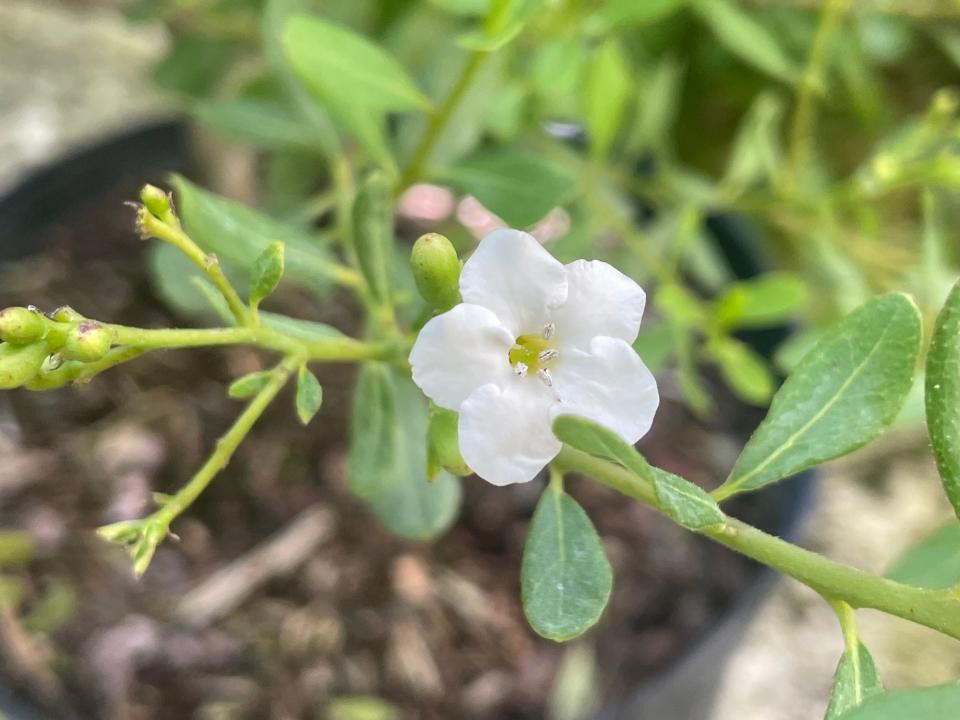
Plant these natives
Here are a few more native plant suggestions for your gardens. At the Mounts Botanical Garden plant sale this past weekend, another great Earth Day event, I found little strongbark, Bourreria cassinifolia, a wonderful endangered native shrub with tiny fragrant white flowers that are followed by clusters of small orange fruits loved by birds. This is a terrific evergreen border shrub, not exceeding 3 to 4 feet in height, very drought-tolerant, and a magnet for numerous butterflies and hummingbirds. It likes sun to part shade but is not picky as to soil. Give this a try – it’s a great addition to any border and the flowers bloom continuously!
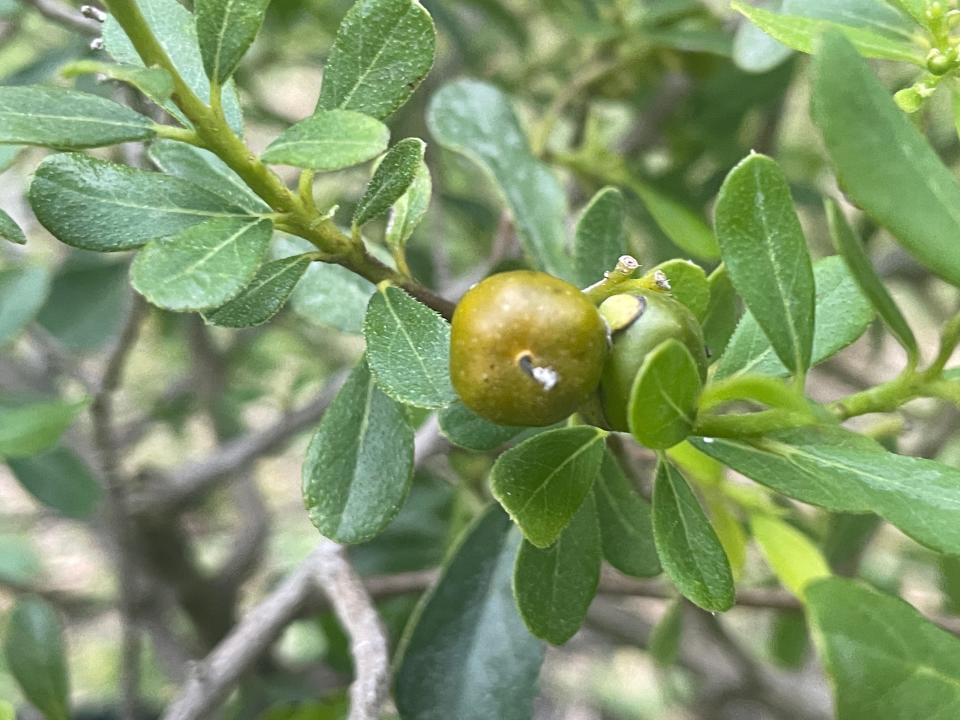
Finally, partridge pea is another truly wonderful small native shrub. The bright yellow flowers have a touch of red at the base and bloom from spring to early winter. Light green feather-like foliage gives this an airy texture. Growing 1 to 3 feet, with an equal width, this likes full sun to light shade in moist, well-drained sandy soil. This is host to several butterflies, listed above.
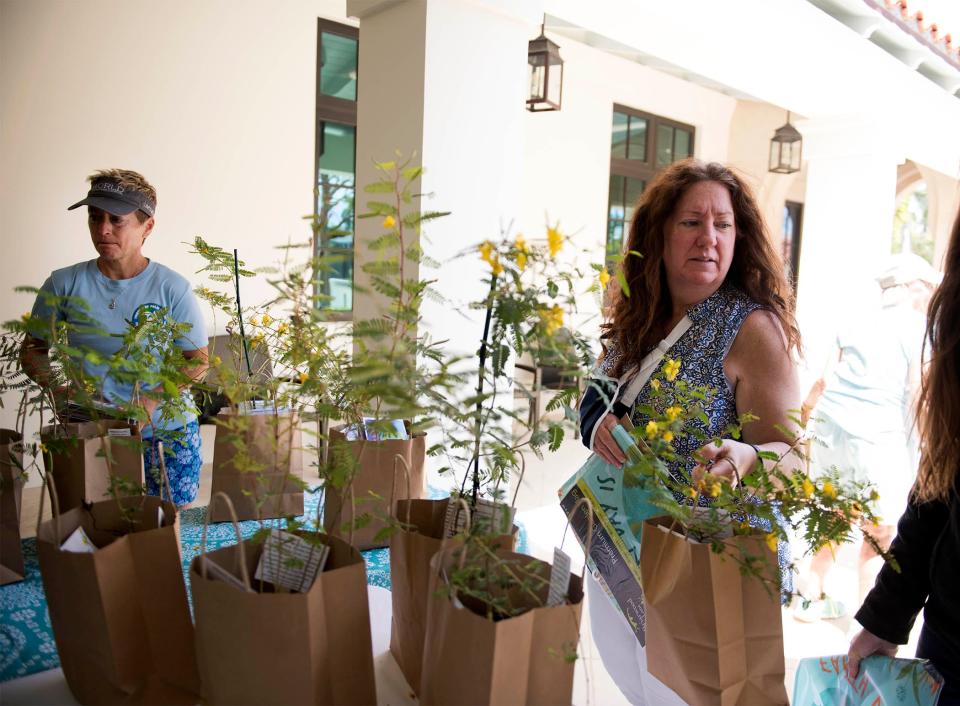
This article originally appeared on Palm Beach Daily News: Palm Beach students raise awareness of protecting our earth

